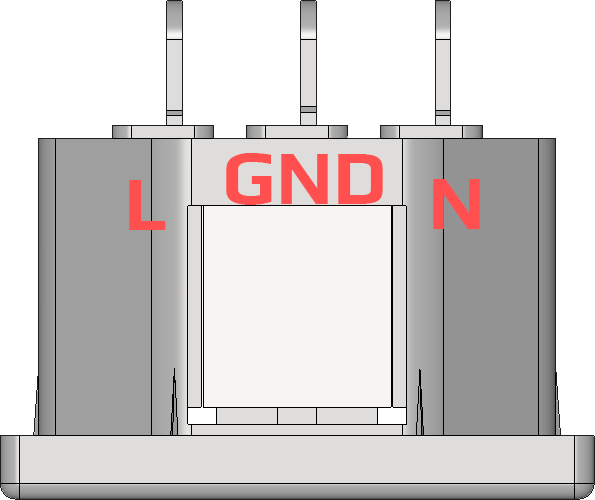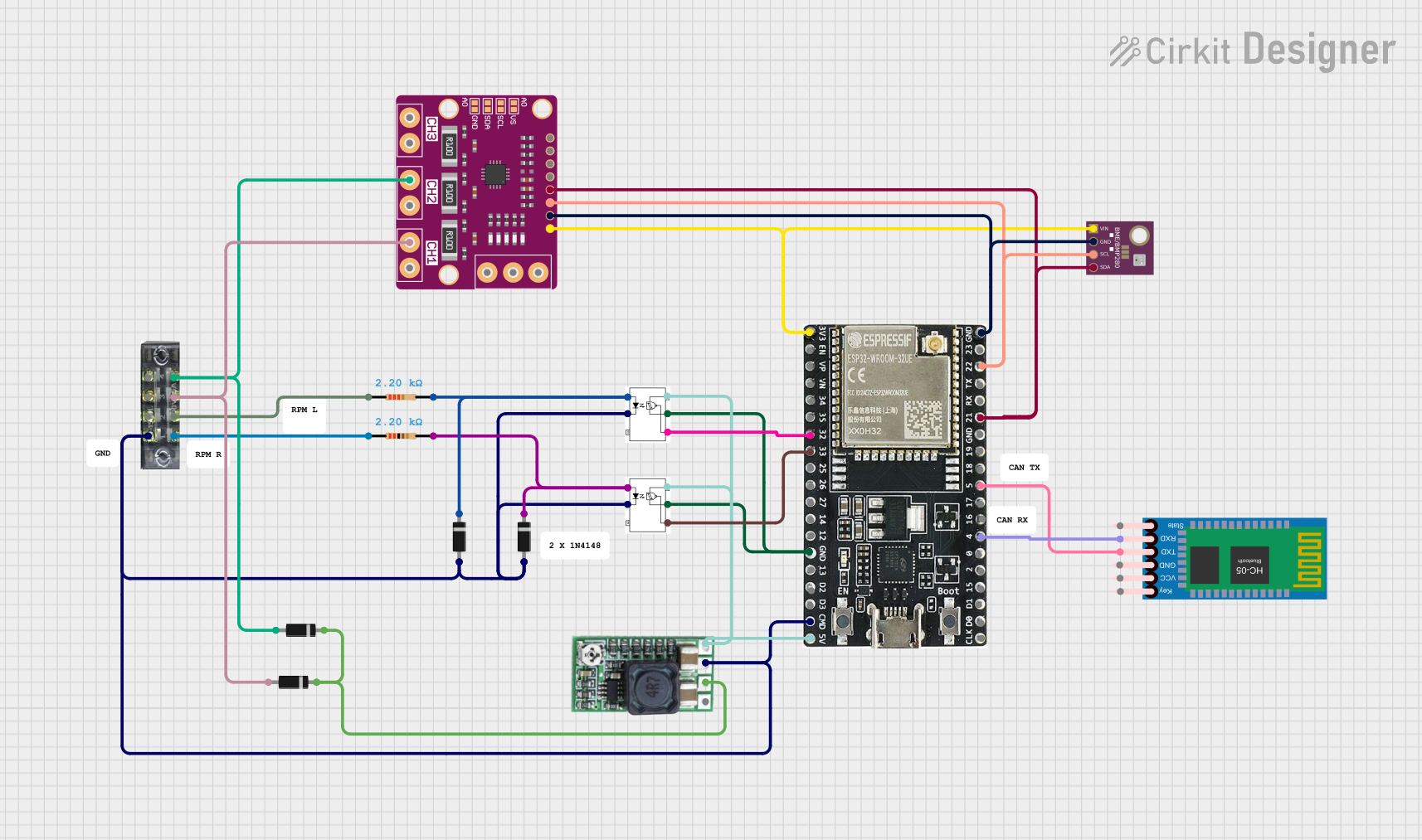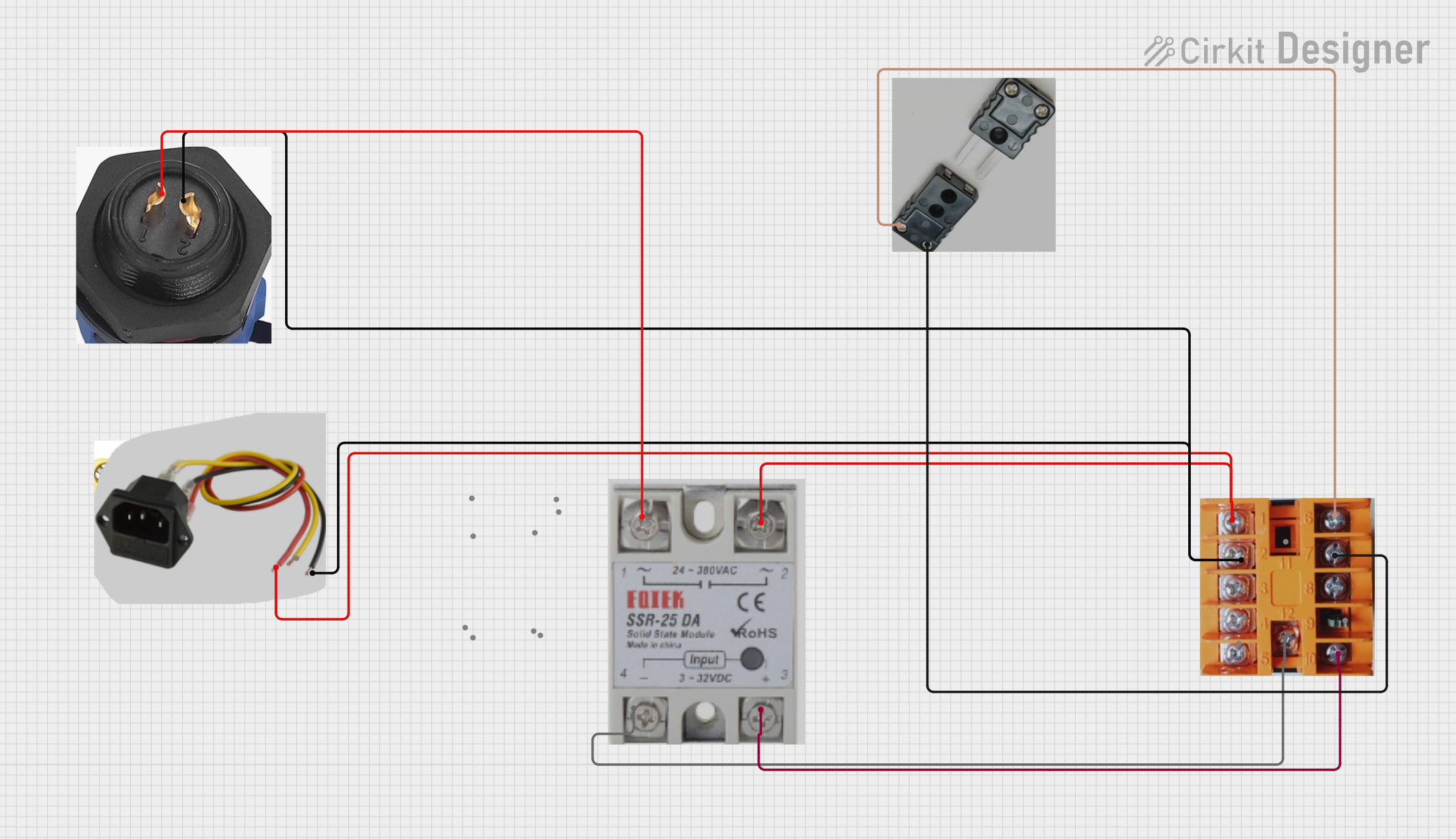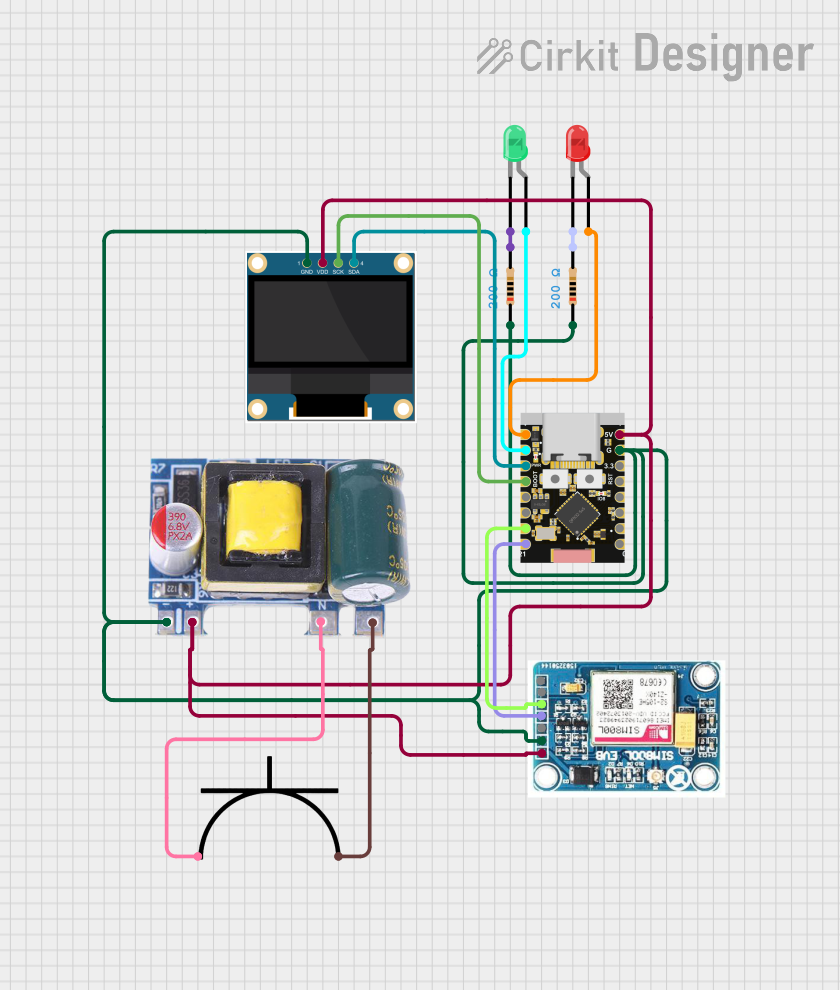
How to Use IEC320 In: Examples, Pinouts, and Specs

 Design with IEC320 In in Cirkit Designer
Design with IEC320 In in Cirkit DesignerIntroduction
The IEC320 In, also known as the IEC C13 connector, is a standardized power connector commonly used in a variety of electrical appliances and equipment. It is designed to connect devices to the mains power supply, providing a secure and reliable connection for AC power. The IEC320 In is widely used in desktop computers, monitors, printers, and other office equipment, as well as in larger appliances like amplifiers and power distribution units.
Explore Projects Built with IEC320 In

 Open Project in Cirkit Designer
Open Project in Cirkit Designer
 Open Project in Cirkit Designer
Open Project in Cirkit Designer
 Open Project in Cirkit Designer
Open Project in Cirkit Designer
 Open Project in Cirkit Designer
Open Project in Cirkit DesignerExplore Projects Built with IEC320 In

 Open Project in Cirkit Designer
Open Project in Cirkit Designer
 Open Project in Cirkit Designer
Open Project in Cirkit Designer
 Open Project in Cirkit Designer
Open Project in Cirkit Designer
 Open Project in Cirkit Designer
Open Project in Cirkit DesignerCommon Applications and Use Cases
- Desktop computers and monitors
- Printers and office machines
- Amplifiers and audio equipment
- Power distribution units in data centers
- Laboratory and industrial equipment
Technical Specifications
Key Technical Details
- Rated Voltage: Up to 250V AC
- Rated Current: Up to 10A or 15A (depending on the specific model)
- Number of Pins: 3 (including ground, live, and neutral)
- Temperature Range: Typically -25°C to +70°C
Pin Configuration and Descriptions
| Pin Number | Description | Wire Color (International) |
|---|---|---|
| 1 | Earth (Ground) | Green/Yellow |
| 2 | Neutral | Blue |
| 3 | Live (Hot) | Brown or Black |
Usage Instructions
How to Use the Component in a Circuit
- Power Source Connection: Ensure that the IEC320 In connector is properly connected to a compatible power source with the correct voltage and current ratings.
- Device Connection: Connect the IEC320 In to the corresponding IEC320 C14 male inlet on the device you wish to power.
- Safety Check: Before powering on the device, double-check all connections for proper polarity and secure fit.
Important Considerations and Best Practices
- Polarity: Always connect the live, neutral, and ground wires to their respective pins as per the table above to avoid electrical hazards.
- Cable Rating: Use a power cable that matches or exceeds the voltage and current ratings of the IEC320 In connector.
- Inspection: Regularly inspect the connector for any signs of damage or wear. Replace if necessary.
- Certification: Use connectors that are certified by recognized safety standards (e.g., UL, CE).
Troubleshooting and FAQs
Common Issues Users Might Face
- Loose Connections: If the device intermittently powers off, check for loose connections at the IEC320 In and the power inlet.
- Overheating: If the connector or cable is overheating, this may indicate an overcurrent condition. Disconnect the device and check the current rating of the appliance against the connector and cable.
Solutions and Tips for Troubleshooting
- Secure Connections: Ensure that all connections are tight and secure. A loose connection can cause arcing and overheating.
- Check Ratings: Verify that the power cable and connector are appropriately rated for the device's power requirements.
- Visual Inspection: Look for signs of damage, such as melting or discoloration, which could indicate a serious issue.
FAQs
Q: Can I use the IEC320 In connector with any device? A: The IEC320 In connector should only be used with devices that have a compatible IEC320 C14 male inlet and are rated for the same voltage and current.
Q: Is it safe to plug in equipment that's rated for a different voltage? A: No, you should only use equipment that matches the power source's voltage to avoid damage or safety hazards.
Q: How can I tell if my IEC320 In connector is certified? A: Look for certification marks from recognized testing organizations (e.g., UL, CE) on the connector or packaging.
This documentation is intended to provide a comprehensive overview of the IEC320 In power connector. For specific applications or additional information, consult the manufacturer's datasheet or contact a professional electrician.